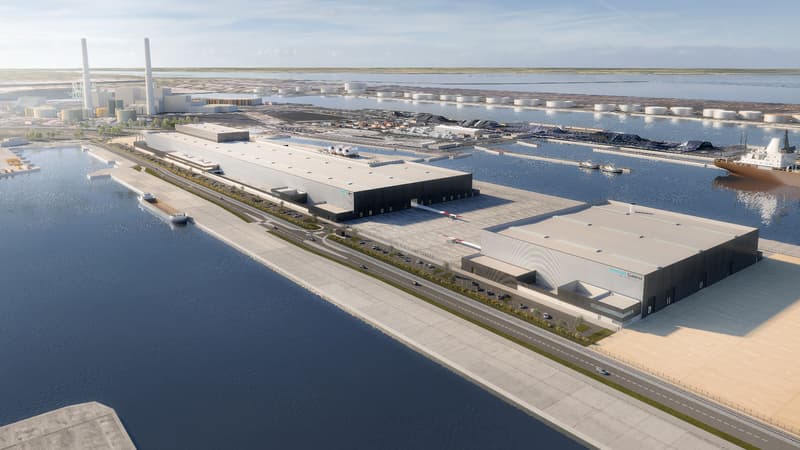1259. This is the number of investment projects identified in 2022 by the firm EY, which publishes its annual barometer* of the attractiveness of European economies. This is the highest number of investments in France since 2010. It has slightly increased by 3% compared to 2021.
For the fourth consecutive year, France continues to be the European engine for foreign investment. First with a greater increase: the number of investments only increased by 1% in Europe (5,962 in 2022) and even fell in some countries in an inflationary and credit contraction context. This is the case of the United Kingdom (-6%), Germany (-1%) and Spain (-10%).
But, above all, France continues to be the preferred destination for investors with 1,259 projects announced in all of last year compared to 929 in the United Kingdom, 832 in Germany and 324 in Spain.
Since 2017, the number of foreign investment projects has averaged 1,118 per year compared to 549 per year during the 2010-2015 period.
Against this favorable backdrop, three regions did well in 2022. First of all, Île-de-France, which remains at the top of the French regional ranking with 326 investments, up 12% in one year. The Paris region has also become the leading territory in Europe ahead of Greater London (299), North Rhine-Westphalia in Germany (277) and Berlin (168).
But other regions have experienced even stronger growth rates, such as Hauts-de-France (+24% with 133 projects) and New Aquitaine (+28%, 102 projects).
Another good news for the country, the industry is picking up and confirming its recovery observed for some years. Foreign industrialists now think more of France than of any other country on the European continent when it comes to investing.
In 2022, 547 projects (+13%) were announced, more than double that of the second in the ranking (Turkey) and well above the United Kingdom (175) and Germany (106).
“Industry has (again) become a driver of France’s attractiveness: 4 out of 10 projects in 2022 (547 out of 1,259) involve the installation or expansion of a factory, and the availability of carbon-free energy is maintained, Despite the current energy crisis, France’s main asset for industrial leaders, notes EY Another confirmation of the new DNA of the hexagonal appeal, France is the “European champion of innovation” with 144 hosted R&D centers, ahead from the UK and Germany.
The change in the industry is notable since before the health crisis, industrial projects only represented 34% of foreign investment (40% in 2022) and even barely 27% in 2016.
Not enough corporate headquarters
According to the international leaders surveyed, France’s strengths are the availability of carbon-free energy (mentioned by 49%), skilled labor (39%) and quality of life (38%).
While the United Kingdom is entangled in its Brexit and Germany suffers from its strategy of dependence on Russian gas and produces highly carbon-intensive electricity, France is once again on the shelves of the planet’s decision-makers.
However, if France is catching up after years of relative underinvestment compared to its neighbors, this revival should not hide weaknesses that are still present.
The country is still struggling to attract the headquarters of foreign companies. With 78 projects related to decision-making centers in 2022, their number fell last year (93 in 2021) and France is still worse off than its British competitor, but weakened by Brexit (133 projects).
“The situation seems all the more worrying as barely 10% of the foreign leaders we interviewed plan to set up or expand their decision-making centers in France over the next three years, observes EY. The UK, despite Brexit, maintains its power of attraction in promising sectors, such as technology”.
France is no longer a land of exile for investors, but the projects, though numerous, are still timid in terms of size and job creation.
Thirty jobs per project
The 1,259 location projects identified by EY generated 38,102 jobs, or about thirty on average per site. In comparison, the UK does better with 50 jobs (46,779 in total in 2022), as well as Germany with 40 jobs (33,548 in total) and especially Spain with units with an average of 120 jobs (total of 39,104).
Because they remain mainly extensions of sites rather than ex nihilo creations for which France is privileged. Of the 1,259 projects in France, only 35% are so-called “greenfield” sites, when this rate is 65% in Germany and 70% in the United Kingdom.
“The numerous reforms undertaken in France in recent years (reduction of social charges on low wages, labor law reforms) have made it possible to reduce certain disadvantages that weigh on the competitiveness and attractiveness of France, notes EY. But they still seem to be far away. enough to lead to job creation: the American Chamber of Commerce in France (AmCham) points out, for example, that “great efforts still need to be made in terms of social legislation, the cost of layoffs and the cost of labor “.
Despite the supply policies implemented in recent years, the hourly cost of labor is still higher than our main European competitors according to Reexecode: 41.80 euros per hour in France in the third quarter of 2022 in industry and market services compared to 39.80 euros in Germany, 28.70 euros in Italy and 23.10 euros in Spain. The average in the euro zone is 34.20 euros.
*Since 1997, EY’s European Investment Monitor (EIM) has recorded the number of foreign investor projects in some forty European countries, including Turkey. The census takes into account public and firm announcements of investments conducive to job creation and verifies them. These establishment and extension flows occur in a wide variety of activities and sectors, but excluding some whose establishment logic is based on attractive factors, certainly interesting, but structurally different from industrial, decision-making or technological establishments (such as hotels ). , sales areas or restaurants).
Source: BFM TV


